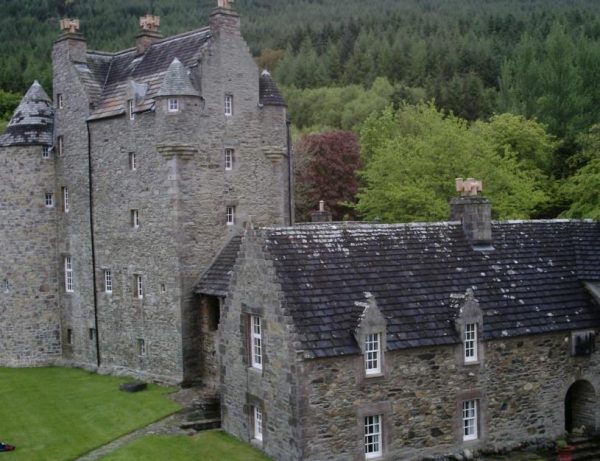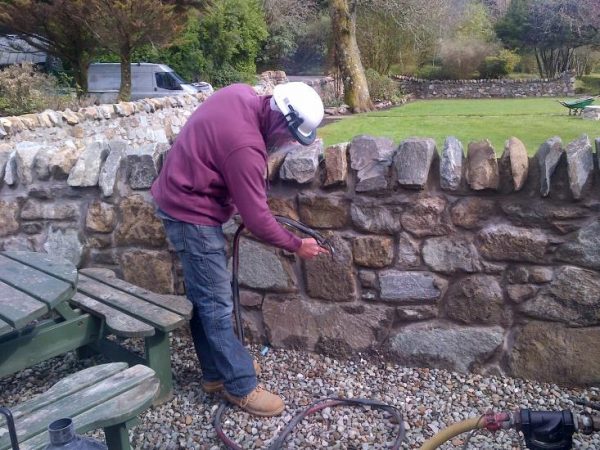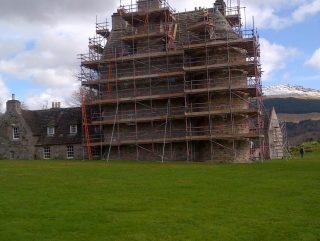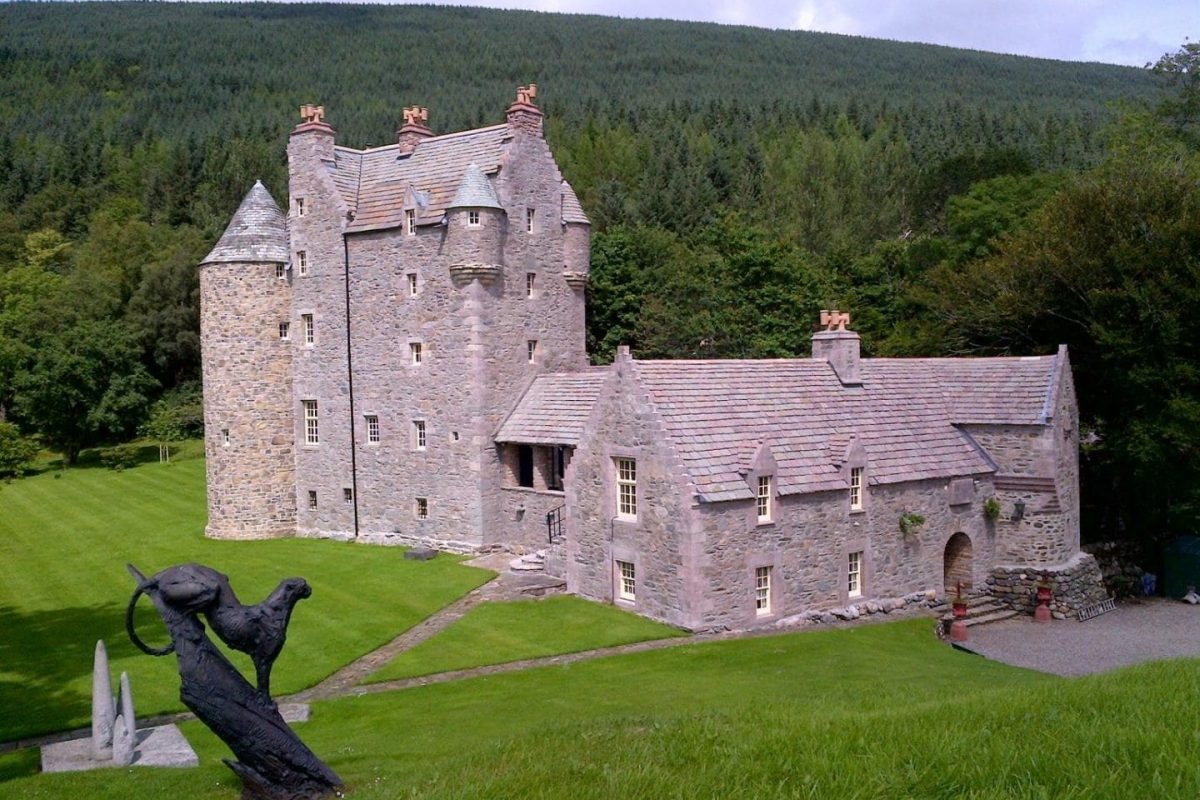Dunderave Castle, is a picturesque building in an idyllic loch location on the north west banks of Loch Fyne in Argyll & Bute a few miles up from Inveraray. The castle had become heavily weathered due to it’s location and required extensive renovation. If you are interested in castle renovation for your own project read on.
History of The Castle
The current Dunderave Castle dates back to 1598 as the ancestral home of the Macnaughton clan. Until the first road from Inveraray towards Glasgow was created during the period immediately following the 1745 rebellion, access to the Castle was easy and functional by boat alone.
During the early 19th century the building gradually fell into disrepair and not until 1911-12 did re-construction begin by Robert Lorimer.
Renovation Requirements
In 1989 the current owners started the current long and extensive project of internal decoration and restoration. The main prerequisite was all works being carried with respect of the history and heritage of the building being foremost in their minds.
Much of the earlier external work had not been carried out in a manner that gave adequate protection against the elements. The building faces directly out onto the loch, which runs in a south-westerly direction towards the sea. When there is a prevailing storm from that same direction the castle gets hit full-on by the weather. This had led to weather damage alongside issues with extensive algae growth.

The renovation of the external walls commenced in late 2011. After hefty research, Beech Restoration were contracted to commence the job. The contractors have an impressive reputation for dealing with projects that demanded the skills and experience required, including castle renovation.
Having worked on projects involving Scottish Heritage and English Heritage, Beech Restoration were well versed with processes and products that would be appropriate. Windsor Castle, St. Pancras Station and The Roundhouse-Derby are included in their portfolio.
Removal of Previous Coatings
The first task was to find the preferred method to remove an unknown 2 pack clear polyurethane coating that was preventing the stone walls from breathing and retaining water. In turn, this was causing the coating to become crazed as water was trying to push through in addition to there being an ideal breeding surface for mosses and fungi. This was vital for the protection and future proofing of the castle renovation.
Firstly, a 3 metre high band from the ground had the coating removed to form a test area. Removal tests were performed using chemical removal, high pressure hot water blasting and grit blasting. The final chosen method was a process involving a fine Bengal Garnet abrasive action using a unit at 5 bar low pressure.

At a rate of 8m2/hour this allowed a quick and effective removal of the coating. This returned the stone to its pristine and original appearance. The walls retained water immediately started to drain out.
The Castle Renovation
Secondly, to ensure all works were carried out within the agreed schedule, the contractors worked with local suppliers to erect scaffolding. Once scaffolded, a closer inspection of the upper sections of both facade and roof was performed. This lead to the repointing of the main chimney breast using an appropriate coloured mortar.

Thirdly, where the windows were being painted, a combination of new pointing and mastics were applied. This was to give ample adhesion and flexibility at the joints. Lead flashing was found to be inadequately set and screwed into the stone work.
These sections were removed and replaced in the correct manner of setting 25mm into the wall using lead wedges and a pointing mix. Each lead section was set to the tiles with expanding foam. All existing cement fillets were removed and replaced with lead flashing installed in the same manner. All Gullies were cleaning out and then bitumen coating applied to the inside and painted on the outside. The castle renovation was almost complete.
Preventative Measures
Fourthly, the final stage was to ensure protection of the walls against rain and frost. An anti fungal façade cleaner was supplied to spray onto all the stone, mortar and flaunched surfaces of the castle. This high performance cleaner removed any organic and microbiological growth contaminants from the porous external walls.
Once cleaned thoroughly, the treated castle walls will remain water repellent for a minimum of 12 years. Now the castle walls retain the substrates breathability. By keeping the walls dry the freeze thaw cycle problems were solved. Also, the insulation properties on the building were enhanced and re-growth of moss and other organic materials were prevented.
Finally, if you require a cleaner for your external heritage property, Promain suggest our Centrecoat BF Façade Cleaner. In conclusion, this impressive product will remove organic and microbiological growth contaminants from porous vertical surfaces. This includes substrates such as natural stone, cement, tarmac, brick, terracota and more.
Lastly, if you have any enquiries regarding using any cleaners, paints or coatings on a heritage building, contact our technical team. Promain have extensive knowledge regarding sympathetic coatings or treatments for heritage projects. We aim to always work closely with manufacturers to find the appropriate product for your individual needs.




